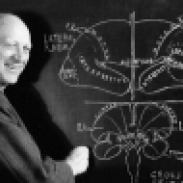Since 1997, more than 100,000 Parkinson’s Disease patients have been treated with deep brain stimulation (DBS), a surgical technique that involves the implantation of ultra-thin wire electrodes. The implanted device, sometimes referred to as a ‘brain pacemaker’, delivers electrical pulses to a structure called the subthalamic nucleus, located near the centre of the brain, and effectively alleviates many of the physical symptoms of the disease, such as tremor, muscle rigidity, and slowed movements.
DBS is generally safe but, like any surgical procedure, comes with some risks. First and foremost, it is highly invasive, requiring small holes to be drilled in the patient’s skull, through which the electrodes are inserted. Potential complications of this include infection, stroke, and bleeding on the brain. The electrodes, which are implanted for long periods of time, sometimes move out of place; they can also cause swelling at the implantation site; and the wire connecting them to the battery, typically placed under the skin of the chest, can erode, all of which require additional surgical procedures.
Now, researchers at the Massachusetts Institute of Technology have a developed a new method that can stimulate cells deep inside the brain non-invasively, using multiple electric fields applied from outside the organ. In a study published today in the journal Cell, they show that the method can selectively stimulate deep brain structures in live mice, without affecting the activity of cells in the overlying regions, and also that it can be easily adjusted to evoke movements by stimulation of the motor cortex.
Continue reading →














You must be logged in to post a comment.